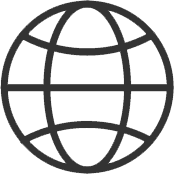底部
|
|
|||
|
|
|
||
|
|
|
底部版权
|
产品中心banner

NEWS CENTER
The rapid development of China's footwear industry creates better opportunities
In recent years, China's footwear industry has developed rapidly and has become the world's largest footwear producer and exporter. However, due to rising labor costs, trade protectionism, and homogenous competition, China's footwear industry has also encountered unprecedented challenges. Where is the development of the footwear industry? Will the "One Belt and One Road" construction bring new vitality to enterprises?
According to statistics from the General Administration of Customs of the People's Republic of China, in May this year, the export volume of China's footwear products was 420,000 tons and the export value was 29.77141 billion yuan. From January to May of this year, China’s footwear exports totaled 1.77 million tons, an increase of 10.0% over the same period of last year; the cumulative export amount was 133.429293 billion yuan, an increase of 14.2% over the same period of last year. The promotion of the “Belt and Road Initiative” coupled with the improvement in the international trade situation in the first half of the year provided a stable export order for footwear enterprises.
Jindi Group Co., Ltd. is a footwear enterprise integrating R&D, production, sales and service. Its products are mainly sold to more than 30 countries and regions such as Europe and America. Jin Jian Group general manager Zhu Jianfeng said that due to the relatively stable orders of large customers, the year-on-year orders have grown slightly. At present, the export volume of enterprises from January to May increased by about 18% year-on-year.
Li Feiyi, deputy general manager of Jiangsu Huihong International Group Zhongding Holdings Co., Ltd., also told reporters that the overall export situation of the company this year is similar to that of the industry's big data, and the export volume from January to May increased by about 14%. Huihong Zhongding Company is a company mainly engaged in import and export trade. Its business covers shoes, textiles and garments, toys, bags, machinery and electronics, sports department stores and other products. In addition, companies are also actively expanding new export fields such as pharmaceuticals, ships, tools, pesticides, and chemicals.
Regarding the reasons for the growth of exports, Li Feiyi pointed out that first of all, the international market has recovered this year. The main reason is that the overall economic performance of the United States is good. The orders of enterprises are in good condition and the demand for foreign countries is increasing. Secondly, the country has continued to promote supply-side reforms, coupled with increasingly stringent environmental protection requirements, eliminating some small factories, which to a certain extent ensured the status of orders for quality factories. Due to rising labor costs, rising prices of raw materials, and fluctuations in exchange rates, some labor-intensive production facilities such as clothing, textiles, and footwear have gradually shifted to Southeast Asia and other regions.
The “One Belt and One Road” initiative provides a win-win opportunity for Chinese companies and countries along the route. When it comes to whether the company also plans to transfer to countries along the “Belt and Road”, Zhu Jianfeng frankly stated that the construction of “One Belt and One Road” provides enterprises with a path of industrial transfer, and the business opportunities of the countries along the route are boundless. The Golden Emperor Group has been paying attention to the construction of the “Belt and Road” and has also visited the countries of South and Southeast Asia in Bangladesh, Cambodia, Vietnam, and Myanmar. The choice is two-way. The construction of the “One Belt and One Road” will not only bring greater convenience to the foreign trade development of Chinese enterprises, but also the countries along the route will consider increasing employment rates, developing related industries, introducing management experience, and attracting investment and investment needs. Actively "hug" us.
The tariff preferences of Southeast Asian countries along the “One Belt and One Road” have allowed footwear companies to “pick up”. “The GST tariffs in Southeast Asian countries are very advantageous. For example, China’s footwear products are subject to tariffs of 15% to 19% when exported to the EU, and the same products exported from Cambodia and Myanmar to the EU can enjoy zero tariffs. The gap is very high. "Zhu Jianfeng hopes that the government can increase support for export enterprises, increase preferential tax rebates, reduce business pressure, and enhance the competitiveness of enterprises."
Huihong Zhongding Company is also actively inspecting the national markets along the “Belt and Road”, and is considering the development of the underdeveloped regions or markets that are not originally concerned, such as India, Bangladesh, Myanmar, South Asia, Southeast Asia, or Central and Eastern Europe. Li Feiyi stated that enterprises should make timely changes to conform to the development of the “Belt and Road” initiative. First, they will consider setting up factories in countries along the route; secondly, the flow of tourists will also make the industry’s industrial chain passively transfer; again, the original company Exports are mainly finished products, and later we will also consider the export of some spare parts, materials, or related mechanical equipment and technologies. Li Feiyi called for export-oriented enterprises to pay for processing fees and production factors for foreign factories or offices. It is hoped that the country will consider foreign exchange policies and give enterprises more convenience.


